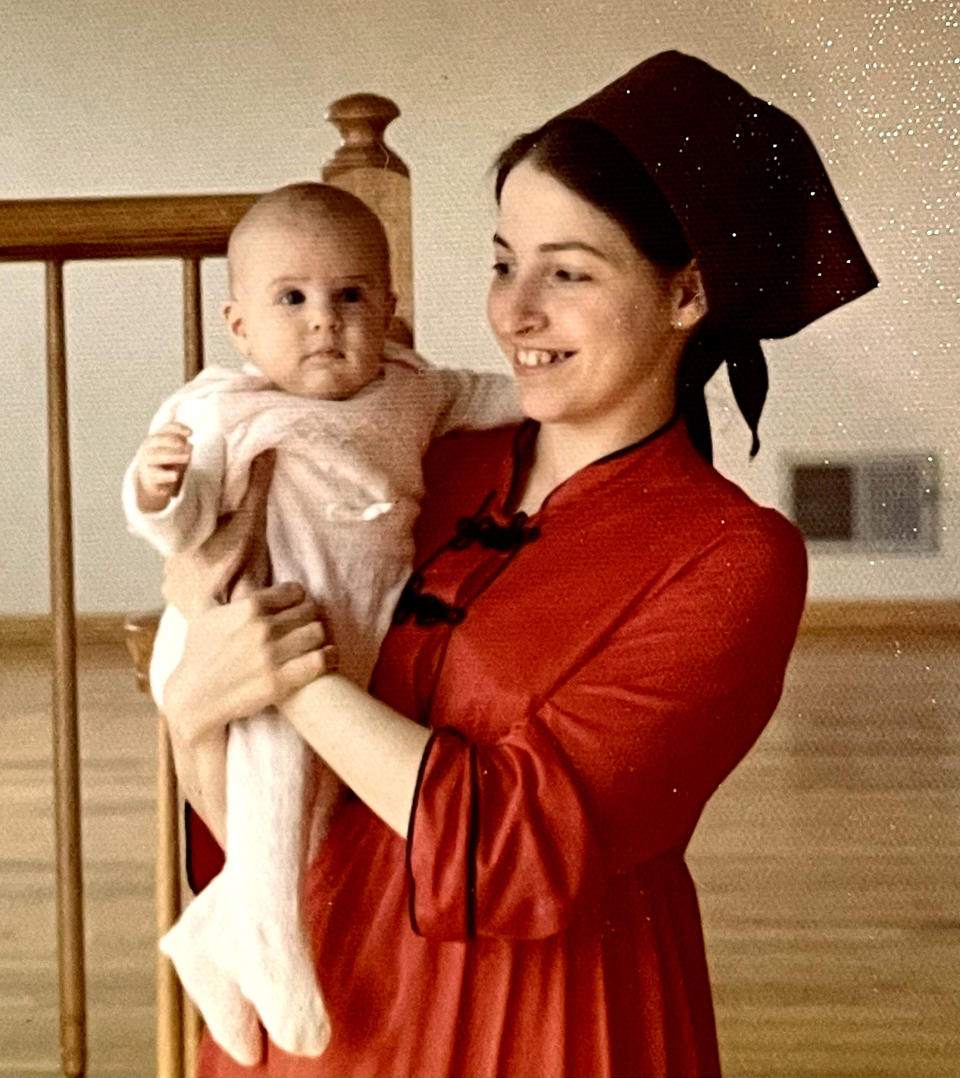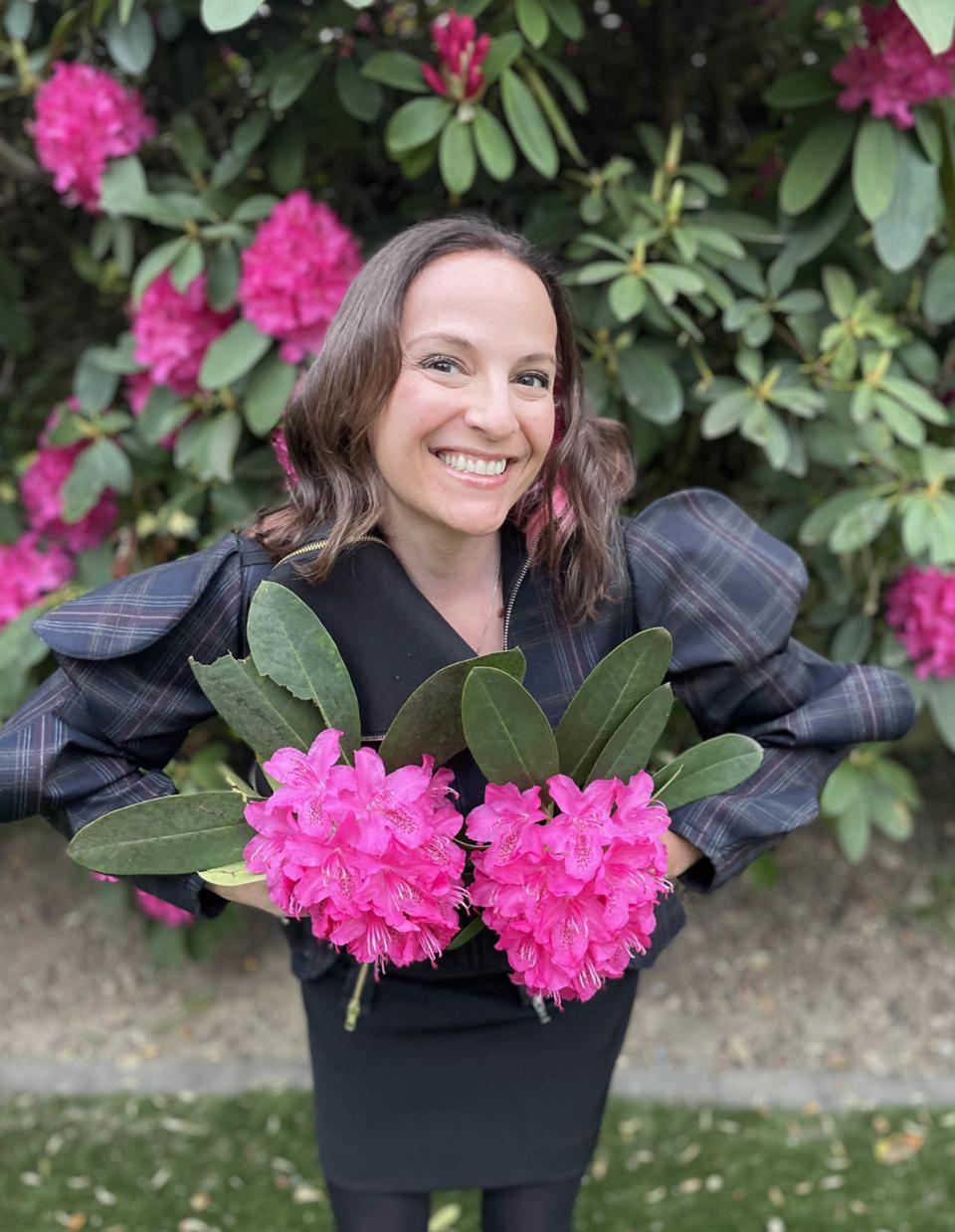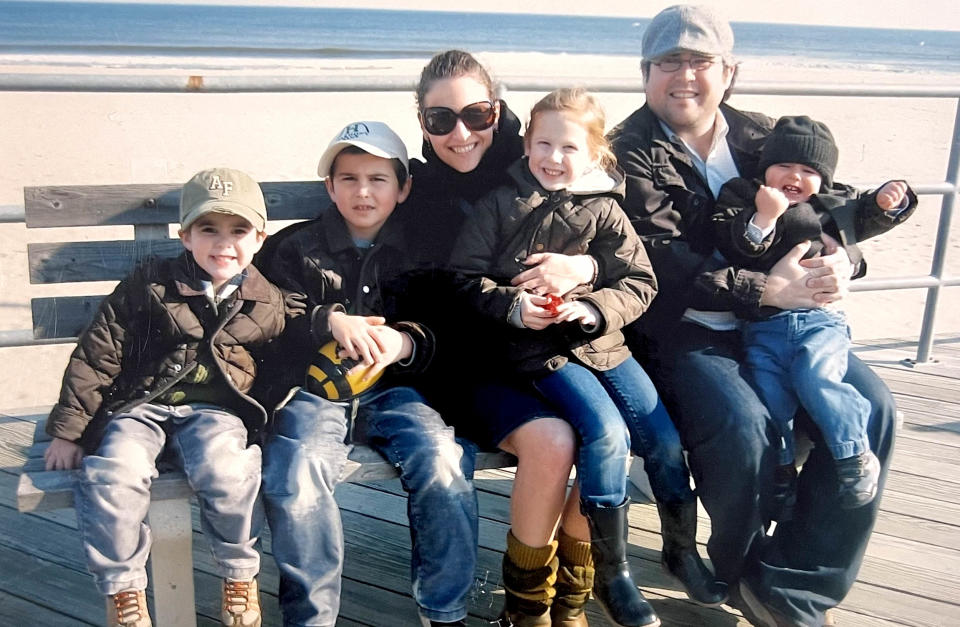I had a double mastectomy to avoid breast cancer. It was already there
I’m a 15-year breast cancer previvor and survivor, which means I tried really hard to avoid cancer, but managed to get it anyway. My diagnosis arrived when I was 34 years old, and one thing about being a young person with cancer is that people will forever associate you with the disease. As a longtime prevention advocate, I wouldn’t have it any other way.
The words “breast” and “cancer” in the news immediately draw my eyes; they ignite my hope that women might soon benefit from a new technology or method for earlier detection and gentler treatment. The latest federal guidelines, which lowered the recommended age for a baseline mammogram from 50 to 40, struck a nerve because these guidelines are useless to three generations of women in my family, including me — and countless others just like us.
My mother died of breast cancer at 42. By the time she had her first mammogram at 40, she already had a cancerous tumor the size of an orange, which turned out to be stage 3 cancer. Her mother, who had been sick for many years before dying of breast and ovarian cancer in her 40s, was likely also diagnosed around 40.

As the oldest of five children, I knew that something had to change to stop the cycle of early death we experienced in my family. I was barely an adult when I became the motherless daughter of a motherless daughter and decided to get serious about my breast health.
I did regular self-exams and saw a breast specialist twice a year for a checkup and to learn about the latest preventative options. I breastfed my four children, exercised (sometimes chasing children through the house counted as exercise), and didn’t smoke. I used a low-estrogen form of contraception and would have eaten a porcupine had my doctor said that this, too, might lower my chances of developing breast cancer.
The year I turned 30, two things happened: The first was that my father, age 55, died of colon cancer, ramping up my obsession with prevention even further.
The second was that my breast specialist advised me to have a baseline mammogram. I was much younger than the age at which mammograms were recommended and had to fight with my insurance company and the receptionist at the breast imaging center, who refused to book my appointment.
“You’re not supposed to have a mammogram until you’re 40,” they explained.
“I’ll be dead by 40,” I shot back, standing my ground.

I got my baseline along with a hefty dose of abject fear when the technician called me back into the imaging suite; she thought she saw something on my scan and wanted to take some more images. My heartbeat pounded in my ears as she mashed my breasts between two glass plates for the second time that hour. I thought of my kids at home — how a cancer diagnosis might impact my ability to care for them. I couldn’t bear the thought of making my own infant daughter the next in line to be saddled with the label “motherless daughter.” Thankfully, the “something” she saw turned out to be nothing. I scheduled my follow-up for the following year.
Soon after that, I learned about how I could be tested for the BRCA gene. This mutation gives carriers an 87% chance of developing breast cancer and a 66% chance of ovarian cancer. Given my family history, however, I placed my odds for testing positive at 100%. Heartbreakingly, I also learned that the BRCA gene was first identified in 1994 — the same year my mother died. When the blood test results confirmed my hypothesis that I had the gene, I researched prophylactic double mastectomies. Removing my breasts would reduce my cancer risk to 5%, better than the general population. Angelina Jolie was still years away from putting the procedure on the map, making my decision seem revolutionary.
In November 2008, wearing a yellow hospital robe, fuzzy socks and hair net, I waved my husband a tearful goodbye and padded down a sterile corridor towards the operating room. The reality of undergoing general anesthesia for the first time suddenly caught up with me. While I stood by my decision to have my breasts removed, fear that I’d die on the table devoured me. What if my attempt to stay alive for my four kids left them motherless?
Despite hospital rules against bringing outside items into surgery for fear of contamination, I convinced the team to let me tuck a camp portrait of my kids, aged 7, 5, 3 and 1 under my pillow.
When I woke nine hours later, I asked the nurse to hand me the photo, silently thanking my children for giving me the courage I needed. I felt reborn. In place of my breast tissue was stomach fat and muscle from the reconstruction; in place of constant dread was a lightness I’d never known.
I was free.
Six days later, while recovering in a recliner chair at home, surgical drains dangling from my chest and abdomen, my surgeon called. My pathology had revealed early but aggressive cancer growing in one breast. She and the surgical team were shocked.
They all agreed: I had saved my own life.
As an added precaution, I underwent eight rounds of chemotherapy — the same cocktail my mother had 17 years earlier and precisely what I’d tried to avoid — and bilateral oophorectomy, which catapulted me into menopause at 35.

Having a strong family history and the BRCA1 gene isn’t scary; it’s empowering. It led me to seek advice and screenings in my 20s rather than wait until my 40s when it would have likely been too late.
The new federal guidelines do not, of course, apply to someone with my risk profile. But I know too many women — friends, colleagues, friends of friends — who had no family history yet were diagnosed in their 30s or younger after detecting a change in shape, feel or behavior of their breasts. Ethnicity plays a key role, too. Ashkenazi Jewish women of Eastern European descent, like myself, have a 1 in 40 chance of being BRCA carriers, according to the Centers for Disease Control and Prevention, and therefore have an elevated risk.
Federal guidelines are general and based on statistics which will only favor some. And while I know that not every woman can do what I did, for various reasons — finances, inadequate insurance, resources, education to name a few — there are many more ways to practice early prevention that are less drastic and more accessible than surgery. This is why it’s so important to seek individualized medical advice.
I often say that, in giving me the courage to undergo such a terrifying procedure, my kids saved my life. The truth is, losing my mom so young was the wake-up call that set me on a mission to avoid breast cancer much earlier than I otherwise might have, so I must credit her with saving my life, too.
This article was originally published on TODAY.com

